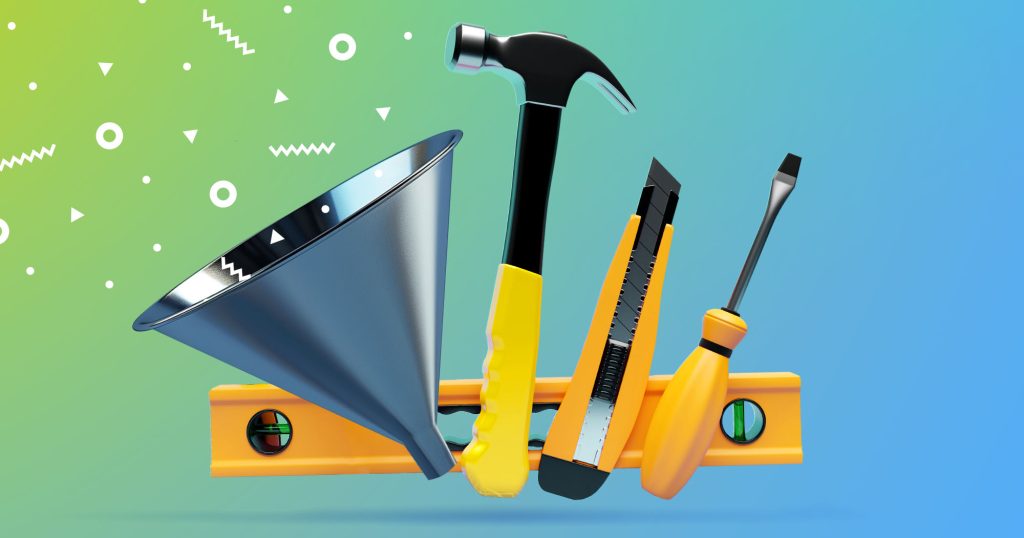LinkedIn offers the following definition of Social Selling:
“Social selling is about leveraging your social network to find the right prospects, build trusted relationships, and ultimately, achieve your sales goals […] Building and maintaining relationships is easier within the network that you and your customers trust.”
I couldn’t agree more.
Social selling is all about building and nurturing relationships with a company/prospect.
The important role that social media plays in the B2B selling process was also demonstrated by the IDC white paper study which stated that “75% of B2B buyers and 84% of C-level/vice president (VP) executives surveyed use social media to make purchasing decisions”.
Below we will see how social media can help in the prospecting process.
- Select the right people
- Choose the right network to grow your audience
- Connect on social media
- Interact with the company or people
Select the right people
The first step is to identify your ideal customer. In the article “9 Crucial ways to integrate Social Selling”, Alice Heiman writes:
“To clearly identify your ideal customer, think of these characteristics:
- Demographic: The age, revenue, location and business sector for your ideal customer.
- Psychographic: The attitudes, values, or lifestyle your perfect client embraces.
Once you know who your audience is, you can figure out where they are and how to contact them.”
Now, a platform such as Reply makes it easier to find the company that best matches your target audience, and from there — get to the right prospect.
Once you know who your prospects are, it’s just about time to engage with them.
Choose the right network to grow your audience
The first step to building a relationship is to choose the right network and grow your audience. Then you can build relationships and nurture leads.
In the article “Driving Leads On LinkedIn: You’re Doing It Wrong”, Mario Martinez Jr. explains that you must understand which network your buyer engages with:
“Likely if you are in the B2B industry you will start with LinkedIn, YouTube, and Twitter.
Secondarily you’ll use Facebook, Snapchat, and Instagram.
If they are B2C buyers then you’d likely use Facebook, Snapchat, Instagram, Pinterest, Twitter and then LinkedIn.”
Connect on social media
You have multiple ways to connect with your target: social media, email or phone call.
Nevertheless, the first step should be to engage with the company on social media.
Follow their activity and interact!
In small companies the owner will take care of the social media, whereas in a bigger company it will be the marketer.
For this reason, the best thing to do with a bigger company is to connect with the decision maker on his LinkedIn profile.
It is important to note that nobody really wants to connect with somebody they don’t know or who doesn’t give them a good reason to do so.
This leaves sales professionals with two options: first interact on Twitter and then connect on LinkedIn, or connect directly on LinkedIn.
If you are considering connecting directly on LinkedIn, give the prospect a good reason to accept your connection.
For this reason, it is fundamental to send a personalized LinkedIn message to connect or ask for a referral.
Also define key influencers in your space & engage with them on a daily basis.
Engaging on Twitter can be easier as you can create a private list of influencers and engage with them. To engage with influencers, you should subscribe to their blog and share their content.
Remember, if you just engage with influencers it looks odd. Start to engage with the rest of your audience as well.
To engage with connections, all you need to do is ask questions or give useful information.
Interact with the company or people
How should you interact with a company or a prospect?
First of all, social media is a two-way interaction. You really want to know your prospect, but they can also learn about you. The more they know about you, the more trust you build.
For instance, you both went to the same university, worked at the same company or have common connections. Also, “Congrats” your prospects on successes, share your opinion, post useful things for your prospect and mention them.
Once your prospect knows you, it is time to move to the next step. Send him an email.
If you used “Reply Lead generation feature” to build your list of prospects you will also have prospects’ email addresses. Next, write a very personalized email.
You have enough knowledge to write a personalized email. For greater efficiency you can switch on the Saleswings website tracking and lead scoring add-on.
The software identifies your most sales-ready leads based on their website activity, in addition to analyzing past and future visits of your leads and scoring their level of engagement.
This will give sales professionals insight into how to interact with the prospect.
Conclusion
Sales prospecting has changed a lot in the last few years.
Buyers look online for advice and sales professionals should be there to support them and develop a trusting relationship on whatever social media they use.
Because at the end of the day, behind social media there is a real relationship between humans.




![Upselling and Cross-selling: The Go-To Guide [+7-Step Framework Inside] Upselling and Cross-selling: The Go-To Guide [+7-Step Framework Inside]](https://reply.io/wp-content/uploads/upsale-1024x538.jpg)

